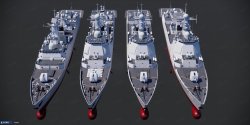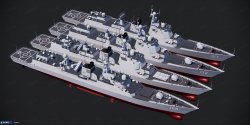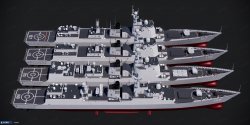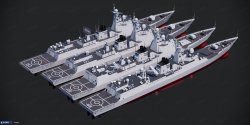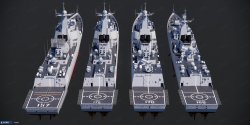interesting, to say the least, choice of examples of superior US systems.
There is a much, much more direct and obvious source of YJ-18 engine inspiration (as well as for the whole rocket).
There is little indication they're different.
There is this common concept that domestic versions are monkey versions multiplied by some modifier in key metrics.
While sometimes (for MCR-restricted articles) it's sorta true, for others it basically implies developing two separate products for one's own money just to worsen one's own commercial prospects. You can develop something else with this money in the first place.
No one does that - there are much more straightforward(and more effective) ways to protect domestic tech and ensure a competitive edge in case of conflict. And especially China doesn't - its way of protecting its tech is different.
Soviet Union is often mentioned as an example of special development monkey models - but SU typically messed up with electronics(used old/creatively simplified electronic blocks) and other older components(already developed!), not with developing different rocket motor and/or battery setups.
Modern Chinese weapons development is extremely competitive where multiple sub component vendors all compete for PLA orders.
The PLA chooses the vendors it wants to supply its forces, and those vendors are essentially barred from exporting its products without express permission for the PLA.
The runner up vendor often gets selected for the export market.
In this way, the PLA ensures opsec for its systems while also ensuring that there is a sufficiently broad array of vendors to ensure healthy competition to promote maximum innovation and lowest price.
There will be more R&D expenditure to an extent, but nowhere near the level we see with the likes of Apple and Samsung for example, who wastes a stupid amount of time and resources literally reinventing the wheel to avoid paying royalties to each other.
For Chinese defence industries, the reverse is true, where the government actively tech encourages and even mandates tech transfers between the big players to essentially reset the playing field after each round so past winners cannot simply rest on their laurels and need to constantly innovate and improve or else they will get overtaken.
This happened to SAC when they got complacent and lazy after getting the Flanker job and CAC dominated for the next two decades. But Beijing also reassigned some of CAC’a top talent to SAC, and they have been doing some solid work lately with the J16 and J31/35.
For the 052DE, it’s the same, they don’t need to specifically develop monkey model export subsystems, they can just use the best runner ups that lost out for the PLAN contracts.
The development costs are already spent, the export work will allow those companies to build up production capacity and experience so they offer much better competition to the winning companies in the next rounds of PLAN competitive tenders.



